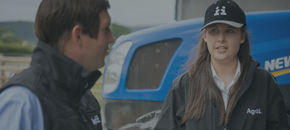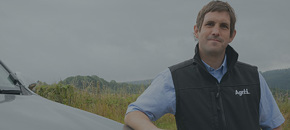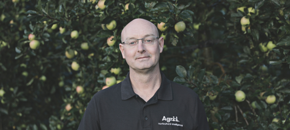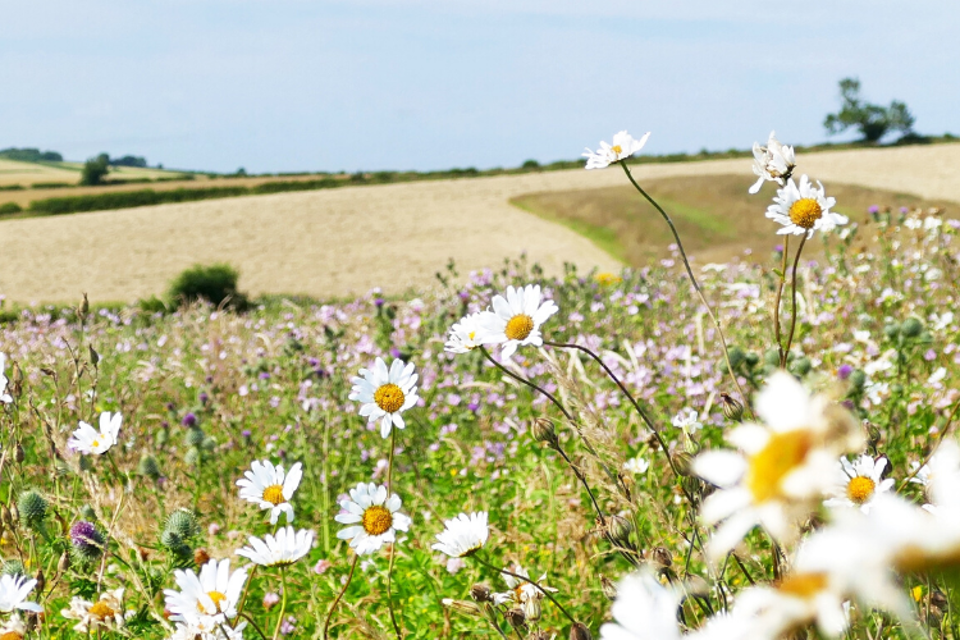
Simple Steps to Unlock the Carbon Economy
Case Study - 22.08.25
With the loss of SFI and uncertainty over its future structure, you’re encouraged to fully embrace the carbon economy.
Agrii’s partnership with Agreena helps you start simply, align with your crop production plans, and turn sustainability into a practical advantage.
Why the Carbon Economy Matters to Your Farm
Carbon credits can provide an additional income stream while helping you run a more efficient, resilient arable business. The key is starting in a way that’s pragmatic, data-led, and aligned with your rotation, not a distraction from it.
A Pragmatic UK Case Study
Working with Agrii agronomist Neil Harper and the Agrii × Agreena approach, Kent grower Alan Clifton Holt took a simple first step: quantify the carbon footprint of day-to-day operations - diesel use, fertiliser applications, crop nutrition and fungicide use - and see what opportunities emerge.
1. Quantify Carbon
Identify the value of carbon in your current production system.
2. Target efficiency
Pinpoint where savings can be made and where inputs can be used more efficiently.
3. Keep options open
Sell, bank, or use credits to offset your own footprint as supply chains request net-zero progress.
“In the first year, we learned the carbon credits available from our current production system could be worth up to £45,000/year. We’re on a learning curve, but it’s something we now have to engage with fully.”
Alan Clifton Holt, Farmer.
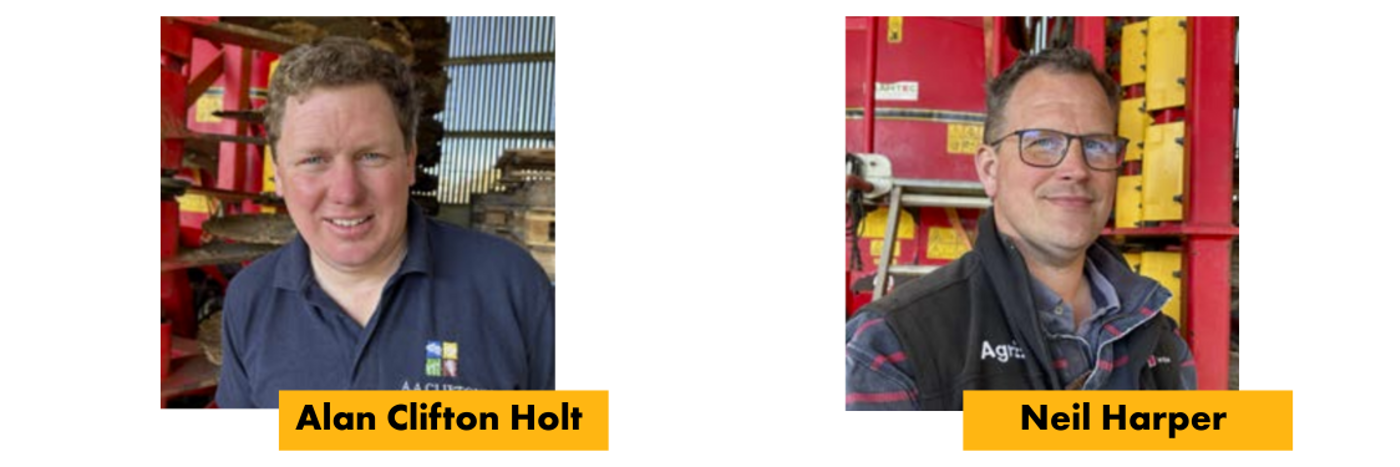
How the Agrii × Agreena Partnership Works for You
- Simple entry point: start with the data you already hold (areas, rotations, inputs, yields).
- Practical for busy seasons: initial assessment focuses on “above-ground” carbon for a quick, low-friction baseline.
- Flexible outcomes: sell credits annually, bank them, or use them for your own offsetting.
“We wanted something farmer-friendly and recognises our efforts to reduce carbon from practices implemented throughout the rotation. Using the Agreena tool, we quickly saw how existing practices translated into credits without heavy time burden.”
Neil Harper, Agronomist - Agrii
Your Rotation, Your Priorities
At A.A. Clifton Ltd. (near Romney Marsh), the 1,400ha arable system is built around first wheats and supported by spring crops and cover crops to manage blackgrass and sustain soil health.
| Crop | Detail | Purpose/Notes |
|---|---|---|
| Winter wheat | Target 600–700ha annually; Group 1 and some Group 2 milling wheats | Premium markets, productivity focus; maintain first wheats where possible |
| Winter barley | Strategic proportion of area | Early combining; spreads summer workload |
| Spring crops | Beans, mustard, linseed, flax, spring oats | Create first wheat opportunities; blackgrass management |
| Cover crops | Four cover crops within a nine-year rotation | Soil structure, organic matter, nutrient cycling, carbon |
Historic wheat yields of 12 t/ha (1980s–90s) are now harder to achieve given blackgrass pressure, later drilling, and reduced input intensity. The strategy is to farm efficiently for high output while meeting sustainability goals.
Inputs & Efficiency: Where Carbon Is Won and Lost
Diesel and fertiliser often dominate the emissions profile. Adjustments in cultivations and consistent use of cover crops can reduce the footprint while supporting soil resilience.
Insecticide policy & BYDV
- Application cost: typically £2–£3/ha.
- Current policy: insecticide-free for 3–4 years to reduce environmental impact.
- Risk management: use of BYDV-tolerant wheat varieties.
- Trade-off: in bad BYDV years, potential losses up to 3 t/ha are factored into decisions.
Soil Carbon, FYM & Organic Matter
Building soil carbon is a long-term game. The farm participates in a straw-for-muck scheme and uses around 10,000 t/year of FYM, but the learning is clear: to increase organic content, you have to grow it rather than import it. Hence the increasing reliance on cover crops.
Nutrient cycling is planned across the rotation, with fertiliser products selected to complement organic inputs and soil indices, supporting both the carbon balance and production efficiency.
Your Potential Carbon Value: Real Numbers
In year one of the exercise, 1,250ha were eligible out of 1,400ha (three fallow fields and nine ploughed fields excluded), generating 774 credits. With a 10% premium pool, that rose to 851 credits.
At a current market guide of ~£50/credit, that indicates a value of ~£42,570 for the year.
You can:
- Sell the credits annually
- Bank them for future years
- Offset against your own footprint to demonstrate progress towards net zero
Many supply chains are already requesting carbon footprint information (notably in dairy) and pressure is likely to increase in arable. You may choose to keep a watching brief, Alan’s business has not yet declared net-zero status and is tracking results over multiple seasons before deciding when to sell or offset.
Why Work with Agrii?
At Agrii, sustainability must go hand-in-hand with profitability.
The Agrii × Agreena partnership is designed to be practical and cost-effective at farm scale, aligned with your agronomy, and adaptable as schemes and market expectations evolve.
“Without profit, there is no sustainable future. Our role is to help you buffer your farm income while guiding you towards practices that strengthen long-term resilience. The carbon economy is an opportunity alongside Biodiversity Net Gain (BNG) and the future SFI, to do just that.”
Amy Hardwick
Sustainability & Environmental Services Manager, Agrii
“We see farmers as pioneers of modern agriculture. This partnership helps you take practical steps today that strengthen your farm business for tomorrow.”
Thomas Gent
UK Market Lead, Agreena
Start Your Carbon Journey Today
The carbon economy is here to stay. With Agrii and Agreena, you can start simply, learn as you go, and build new income and efficiency opportunities into your business.
Figures are drawn from a single UK farm case study for illustration. Carbon prices are market-driven and may vary. Check programme terms for eligibility and methodology.
FAQs
Is there an upfront cost to get started?
For the initial assessment stage, you use data you already hold; the main input is your time. Your agronomist will explain any programme fees or terms beyond this phase.
How long does the first pass take?
It’s designed to be light-touch—enter readily available rotation and input data, then review the baseline results with your agronomist.
Will this disrupt my cropping plan?
No. The Agrii approach aligns with your existing production objectives. It’s about integrating sustainability measures that complement your system.
What about soil carbon?
This case study focuses on above-ground carbon to simplify entry. Soil carbon cis also quantified as part of this programme, and can be discussed as part of a broader, long-term strategy.
Join Our Community

Agrii X
We love engaging with clients and partners. Give us a follow and let's share stories for the community.

Agrii Instagram
A picture paints a thousand words. Follow us on Instagram to see what we are up to.

Agrii Facebook
Follow us on the worlds biggest social media site for the latest news and events straight to your feed.

Agrii LinkedIn
If you are all about the business, connect with us on LinkedIn to build your network
Stay In Touch

Journal Sign-Up
Receive email updates on topical news and information from around Agrii and UK Farming.

Listen To Our Podcasts
Listen to the Tramlines Podcast. Fortnightly chat about agriculture and trials with your host Tony Smith.

Agrii Insights
Read essential agri intelligence for profitable farming.

Find an Event
Join us for our upcoming events and tours.
